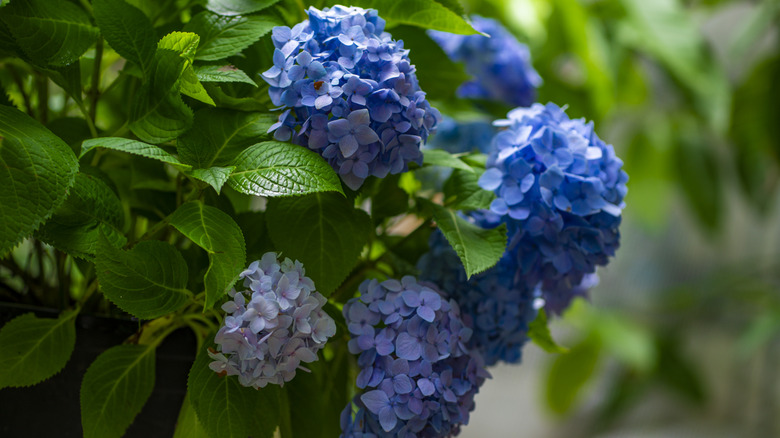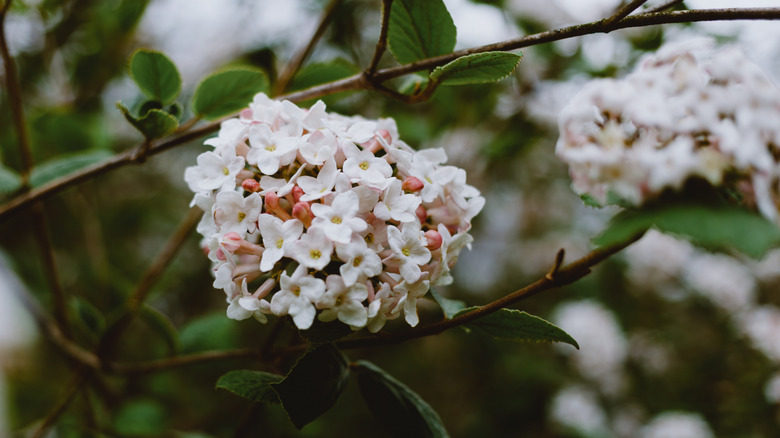The Low-Maintenance Flower That's A Gorgeous Alternative To Hydrangeas
The showy blue, white, purple, or pink balls of delicate flowers framed by the big green leaves of hydrangea (Hydrangea macrophylla) create a colorful, summer-long backdrop for your landscape. Depending on the variety, hydrangeas can quickly grow up to 12 feet tall, either as single specimens or dramatic groupings, and bloom between spring and fall. Hydrangeas may be beautiful, but they can also be high maintenance. Luckily, hydrangea has a doppelganger: Viburnum. Of the more than 150 viburnum species, several varieties have balls of flowers that resemble hydrangea blooms. Chinese snowball tree (V. macrocephalum), European snowball viburnum (V. opulus), and fragrant snowball (V. x carlcephalum) are among them.
While the hydrangea's coloring is determined by the soil's aluminum concentration, which is determined by the soil's pH, viburnum blooms are almost universally white or pink. Tolerance for drought or wet soil, the amount of sunlight the bush needs, and the hardiness zone vary from one variety of viburnum to another. However, the bushes are generally disease-free, drought-tolerant, and require very little care. Hydrangea, hardy in USDA zones 3 through 9, like lots of water and are a tasty treat for deer. Viburnum, on the other hand, rarely suffers from damage by deer.
Some varieties of viburnum are considered invasive because of their rapid growth. While some non-native viburnum are harmless in North American gardens, others like Asian native Linden viburnum (Viburnum dilatatum) cause problems with their rapid growth. The experts at your nursery should be able to tell you which plants are considered invasive in your area. If you have any doubt, buy plants labeled "native."
Which viburnum to grow as an alternative to hydrangea
Chinese snowball tree, hardy in zones 6 through 9, can grow up to 25 feet tall and spread 20 feet wide. It prefers acidic soil and full sun or partial shade. Softball-sized flowers, the largest of the snowball viburnum blooms, emerge green with white inflorescence in the spring, turn completely white, and then sometimes bloom again in the fall. This deciduous Chinese native has no significant pests or diseases.
The 'Roseum' cultivar of European snowball has been grown in gardens since the 16th century. Bushes, hardy in zones 3 through 8, grow 12 feet tall and 12 to 15 feet wide. This sturdy deciduous plant survives long winters with heavy snowfall when grown in alkaline soil in a landscape with good drainage and full to partial sun. Flowers emerge green or white in May and turn pink over time. The European snowball has no significant pests.
Fragrant snowball, hardy in zones 6 through 8, grows 6 to 10 feet tall and wide. These deciduous bushes thrive in full to partial sun and well-drained, acidic to neutral soil. The white, fragrant flowers bloom in April and May, and the leaves turn reddish-brown in the fall. Fragrant snowball has no major insect or pest problems. The 'Cayuga' cultivar, developed by the National Arboretum, is a compact variety with profuse blooms and resistance to disease.

